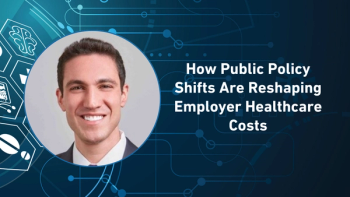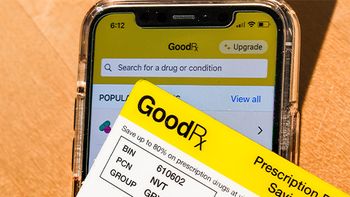
- Pharmaceutical Commerce - March 2010
Retail Pharmacies and the Health and Wellness Renaissance
Following are excerpts from the keynote presentation of Steven C. Anderson, president and CEO of the National Assn. of Chain Drug Stores, at its annual meeting, Palm Beach, FL, Apr. 25.
A consistent theme emerges among the companies represented here within the NACDS membership — pharmacy and front-end, retailers and suppliers alike. Though you differentiate in the marketplace, improving lives emerges as the common value you offer to the public. And you are improving lives in ever-greater ways. Collectively, your companies’ competition to deliver value is creating a re-birth. Call it a health and wellness renaissance, with innovations focused on patients and consumers.
Think back to late 2007 and early 2008. NACDS created our key message: “Pharmacies. The face of neighborhood healthcare.” And the Board of Directors adopted the NACDS Principles of Healthcare Reform. We didn’t wait for the massive legislation; we urged pro-patient, pro-pharmacy policies in any train leaving the legislative station.
Even though President Obama just signed the healthcare reform law, this issue is still in the middle innings. The focus now turns to the Executive Branch for the implementation. The publication Congressional Quarterly Weekly made a great point. Three powerful words appeared 1,045 times in the new healthcare law. Those words are: “the Secretary shall,” which refers to the Secretary of Health and Human Services. Include in that count the words “the secretary may” or “as the secretary determines” and your calculator may blow up. What these words mean is that the Administration has a lot of decisions to make as they begin to write the countless regulations over the years that will implement the new law.
Though we need to remain vigilant, we are entering this part of the game in better shape than in the past.
While the law includes important pharmacy issues, the platform that it presented also proved vital. At this very meeting, in past years, we said this debate would give pharmacy a new chance to tell our story. It did, and we seized the moment. Members of Congress really started to get it when we talked about poor medication adherence being responsible for $290 billion in added costs every year. That’s 13% of health expenditures.
Think about the controversy of [the Patient Protections and Affordable Care Act]. Amid all of that, we were able to position pharmacy as a bipartisan, preventive, costcutting solution. . . . [PPACA] advances medication therapy management, MTM. It includes grant and pilot programs that include MTM, and makes improvements to the Medicare Part D MTM benefit. We have studies in which every $1 spent on MTM reduced overall health spending by $12. Members of Congress wanted to put this into action.
We also received validation for pharmacy’s approach to the Medicaid pharmacy reimbursement issue under the AMP model. As it turns out, our strategy was right-on. We had two huge problems: the incredibly damaging Deficit Reduction Act of 2005, and the absolutely devastating regulations to implement it. Congress did us wrong in 2005. And then the Executive Branch nearly did us in, with the AMP rule in 2007. So, we set out to block the flawed regulations, while seeking the only long-term solution, a change in the law itself.
The preliminary injunction won by NACDS and the National Community Pharmacists Assn. has blocked $5.5 million in cuts to pharmacy each day that are the results of the Deficit Reduction Act and the subsequent AMP rule. It has saved more than $4.6 billion in cuts to pharmacy from January 1, 2008, through today.
Now, provisions of the new law stand to soften those cuts. Members of Congress were clear they would not go to pre-Deficit Reduction Act levels. But the law includes a much-improved definition and calculation method for AMP. They better approximate pharmacies’ costs for purchasing generic drugs. The law also says that federal upper limits will be set using a multiplier of “no less than” 175%. [PPACA] also expands Medicaid coverage, takes steps to close the “donut hole” in Medicare Part D. And it maintains Medicare Part D vaccine coverage.
This industry has been doing some amazing things, but without due credit. It has been like an industry before its time, with innovations and potential that just have not been realized by the rest of the world. Think about what you are doing: bringing to bear the entire store for health and wellness; supplying products that refresh the body, mind and soul; offering services that empower, improve and save lives; leveraging the power of technology; all while remaining focused on the people you serve.
Together, we are creating a renaissance. I am convinced people will look back 20 or 30 years from now, and will see these times — our times – as a historic, watershed moment.
Articles in this issue
over 15 years ago
The Pill as OTC -- Access Versus Health Concernsover 15 years ago
Going Around the Brand 'Positioning Wheel' With Kantar Healthover 15 years ago
Spotlight on the EMD Serono Specialty Digest, 6th EditionNewsletter
Stay ahead in the life sciences industry with Pharmaceutical Commerce, the latest news, trends, and strategies in drug distribution, commercialization, and market access.




